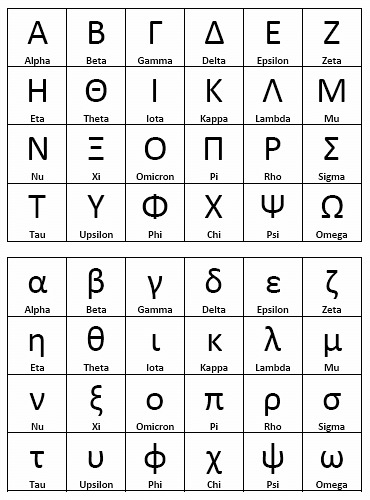#greek alphabet
Text

Nestor's cup, Pithekoussai (Naples, Italy). 700 - 750 BCE. Famous for featuring a written reference to King Nestor of Homer's Iliad, the inscription is one of the earliest surviving examples of the Greek alphabet.
Learn more / Daha fazlası
https://www.archaeologs.com/w/nestors-cup/
#archaeologs#archaeology#archaeological#dictionary#history#art#italy#pithekoussai#nestor's cup#king nestor#homer's illiad#greek alphabet#inscription#pottery#arkeoloji#tarih#sanat#italya
66 notes
·
View notes
Text
Dynamic Descriptions
The secondary sex categories or dynamics are Alpha, Beta, Omega, Beta-Alphas or Zetas, and Beta-Omegas or Thetas. A/N: I picked those particular Greek letters because I wanted all the Beta mixed dynamics to rhyme with Beta.
Alpha
Alphas are the instinctual protectors. They are typically willing to put themselves into harm's way to ensure everyone is safe, however, they will only engage in a physical fight if provoked or an unknown person gets too close to their mate or pack; especially if a mate is pregnant.
They have the longest canine teeth of all the dynamics, but they aren't very sharp. It takes intentional force behind a bite to puncture skin so Alphas bare their teeth as a warning more than a threat. The most common kind of fight is over a potential mate, and this is often the only time an Alpha's nails will protract into claws as their instincts are at the forefront of their mind instead of rational thoughts.
Their protective instincts also drive them to want to provide a suitable, comfortable place to live for their pack and mate(s). Alphas will take their time searching for just the right home that is well located to be protected from others as much as possible or will mark their territory to keep strangers away (deliveries have to be left in a lock box at the edge of the property, like a mail dropbox). Some Alpha's will even build or have a house built for their pack or make various improvements to their homes to make it perfect.
Alphas are the most fertile dynamic when impregnating someone.
Female Alphas have Ambigenitalia, both sets of primary sex reproductive organs, and can therefore impregnate others and be impregnated. They have a clitoral penis or a clitoris that when aroused elongates, fills out in diameter and has a knot structure at the bottom. When not aroused, it shrinks to between 6.5 and 12 cm or 2.56-4.72 in, staying outside the body as an enlarged clitoris. Their testicles are internal for most people but some do have theirs drop.
Female Alphas don't ovulate very frequently (typically every seventy-five days) and they're fertile for fewer days then other dynamics, which makes getting pregnant harder unless they get a fertility boost. They also experience some complications with childbirth as they normally have narrower hips than Betas, making them prefer cesarean sections over vaginal birth as they have become more widely available. Due to their body's restrictions, they more often than not only get pregnant with one pup at a time, which works out as their milk supply is below average so some parents could struggle to feed even one pup at times.
Alphas have an Alpha Voice, but they only have access to it while they have at least one mate bond, have several packmates (three or more) or a pup as it only works on closely bonded people or to specifically push dangerous people away from the pack.
Beta
Betas are the balancers, stable workers and main providers. They have the most sensitive noses which allows them to sense shifts in mood and pheromone/hormone levels in those around them. It can also affect them negatively if the space they are in is particularly smelly. Betas can mildly to moderately influence the moods of others, even strangers, depending on their own control of their pheromones. This ability can improve with practice, but typically, the more people in the space the harder it is to influence everyone to the same degree, unless the person is exceptionally good at controlling their pheromones. When bonded they have even more influence over their mate and/or packmates without practice as there is a higher level of trust in the relationship. But whether there is a close bond or not, the influence is short lived, lasting at most five minutes as it is for peacekeeping or to help keep someone calm.
Betas with excellent to exceptional control of their pheromones are capable of producing a nullifying pheromone that can cancel out any other it comes in contact with, basically resetting a space as long as no one else is putting out more pheromones. This is another balancing tool or it can be used to help someone going into heat make a quick escape. This nullifying pheromone, if used correctly, can be turned into a pheromone/hormone combo that can break down the chemical connections that create bonds; something that is completely unique to Betas.
Betas can also absorb pheromones and hormones, which allows them to help to hold off a rut/heat cycle for a few hours; fully stop a cycle that is just starting or end one early; when bonded, some Betas can absorb enough to stop a cycle at any stage. Absorbing has a rebound effect and will push Betas into either a rut or heat cycle of their own some time later. Which cycle and how long it lasts depends on their own biology, what dynamic their mate is (if they have one) and the strength of the pheromones and hormones absorbed. So a Beta who absorbed heat pheromones and hormones from an Omega that were of a moderate strength (someone who wasn't in full blown heat yet) could be pushed into their own heat a day later. This heat could last approximately 1.5-2 days long. Whereas a mated Beta doing the same thing would probably be pushed into a rut cycle for 1-2 days. The ability to absorb pheromones and hormones starts to fade as they reach fecundopause or the end of their fertility. Post fecundopausal Betas no longer have access to this skill.
When sexually satisfied, a Beta's pheromones can boost the fertility of everyone in the immediate area during rut/heat cycles. The effect can become more potent when mated or with control so contraceptives may be needed. Control can also turn this effect down, but there will always be a mild boost, even for the most disciplined. Outside of these increases and a rebound cycle, Betas are normally only as fertile as a regular human would be.
They have the shortest and bluntest canine teeth of all the dynamics, but they're still sharp enough to initiate a bond when enough force is applied.
Betas have elite level stamina. They are the main workforce as they don't have regular heat and rut cycles to throw them off their everyday activities. Having the levels of energy they do allows them to look after everyone else while also being able to do all the work left over during other people's cycles without it being too tiring.
Omega
Omegas are the instinctual nurturers. They nurture bonds, keeping the connections between everyone in the pack healthy and flourishing. They also tend to gravitate towards nurturing children, pets, plants or even all of these at once.
Omegas are the most fertile dynamic when being impregnated. They are prone to carrying more than one pup at a time in each pregnancy, most often twins (identical or fraternal) but larger numbers are not uncommon (around a 25-30% chance of more than twins). Male Omegas are able to do this as they are Bigenitalic or have Ambigenitalia. They also grow more mammary tissue during the pregnancy in order to breastfeed; for most, the tissue will reabsorb into the body after breastfeeding stops and the hormone levels lower, returning to their previous size, but some retain around an A cup of tissue that may or may not increase in size with subsequent births. Both Male and Female Omegas are above average producers of breast milk, helping their multiples survive past infancy.
Male Omega's Bigenitalia means they have a working male reproductive system, but their sperm count is low, even in heat, so impregnating someone else takes work unless they have an outside help with their fertility.
They have the second longest canine teeth after Alphas and they're also the sharpest.
Omegas gain Omega Voice after presenting. Omega Voice is most powerful in situations where an Omega feels that they are in danger of some kind as they would most likely be able to talk their way out of it, however it must be genuine danger and not a threat that is a means to get someone to use their ability. When threatened, an Omega's most useful tools are their teeth, Omega Voice and their claws which will protract if they need to defend themselves. Omega Voice is also useful for calming down unruly pups or overwhelmed packmates: blood related or pack bonded members of a household, community or compound.
Zeta
Zetas are the midpoint between Alphas and Betas. They and their Theta counterparts have the second most sensitive noses after Betas. Zetas have a mild to moderate ability to influence the mood of their packmates, pups and mate(s) with their pheromones, but no ability to influence strangers. This can of course get stronger with practice and control. The closer the bond, the stronger their ability is without refinement, but the easier it is to mess up more complex mood changes. For example, if someone is feeling angry it's relatively easy to pivot to neutral or calm as they're not directly opposing emotions, but more skill is required to push all the way to happiness and not just make the person madder.
Zetas, similar to Betas, can influence the fertility of others in cycle just by using their pheromones. Their ability, however, works at will and only with practice so there is less of a chance of accidental pregnancy, but on the other hand, if a Zeta can't control it they can't give anyone a boost.
Unlike Betas, Zetas specifically can extend someone's heat cycle by producing rut hormones and pheromones out of their own cycle to keep the heat going. This only works on those who are mated, two or more unmated people or between packmates to a lesser extent. Doing this out of cycle will push them into a mini rut, usually for the duration of the time they're helping the person(s) out. Extending a heat has the benefit of making sure mate bonds are in place and healthy for multi-person bonds and ensuring one or more pregnancies.
Their canine teeth are longer than a Betas but just as blunt, so they also can still initiate a bond.
Zetas are in the middle of the dynamics when it comes to fertility as they produce less sperm than Alphas, but more than Betas. This is true even in rut cycles for all primary sexes.
Female Zetas have Ambigenitalia and can both impregnate others and be impregnated. Female Zetas ovulate more frequently than Female Alphas (about every fifty days) and their hips are typically more in line with a Female Beta's, so they are more likely than Alphas to successfully carry a pregnancy. However, they still frequently only get pregnant with one pup at a time; in very rare instances they might have a twin pregnancy, but no more than two pups at a time. One of the reasons is they are slightly below average producers of breast milk, so multiple pups would have a hard time surviving without outside help.
Theta
Thetas are the midpoint between Omegas and Betas. They, like their Zeta peers, have a mild to moderate ability to influence the mood of their packmates, pups and mate(s), but no ability to influence strangers. They can also influence the fertility of others in cycle at will. Thetas can do the opposite of Zetas and extend someone's rut cycle.
Their canine teeth are longer than a Betas but are almost as sharp as an Omegas.
Thetas are also around the middle when it comes to fertility as they're more fertile than Betas, but less than Omegas.
Male Thetas have partial Bigenitalism as they do not have a vulva, but they do have everything else from both sets of reproductive organs. The uterus is still connected to a cervix and a canal, but the canal is connected to the anus and is separated by a wall. The wall is the Epivagina, which keeps the reproductive organs and waste separated by moving to cover the rectum for access to the vagina when aroused which also closes that half of the anal sphincter. Male Thetas and Omegas also have an internal clitoris just inside the vagina.
Both Male and Female Thetas have about a fifty-fifty chance at having one pup at a time or a random number of multiples, but usually no more than four as their hips aren't as wide as an Omegas. They can also be over-producers of breast milk making them the biggest suppliers of all of the dynamics. It depends on how many babies they have to feed and how many other babies they're around if their bodies will go into overdrive. Thetas are generally known to be rather generous with their oversupply of milk as they have enough to go around, maybe even to store some for later. This has earned them the title of "Wet-nurse" and anyone with a newborn, especially multiples, is all too happy to pay a Theta for their milk or court one for their pack as the mammary glands can be stimulated or encouraged to grow outside of pregnancy if needed.
Dictionary
Fecundopause - end of fertility.
Fecund - Highly fertile; able to produce offspring.
Pause - A temporary stop or rest; an intermission of action; interruption; suspension; cessation.
#omegaverse worldbuilding#a/b/o dynamics#alpha beta omega#a/b/o verse#a/b/o au#omegaverse#a/b/o#omegaverse headcanons#non traditional a/b/o#greek alphabet#alpha#beta#omega#omegaverse au#omega headcanons#alpha headcanons#beta headcanons#fake science#etymology#non-traditional alpha/beta/omega dynamics#traditional a/b/o#male omega#female alpha#a/b/o headcanon#worldbuilding#alpha/beta/omega dynamics#alpha/beta/omega verse
8 notes
·
View notes
Text

ah yes, my favorite camp spots, Stablss and Arcesrps
180 notes
·
View notes
Text
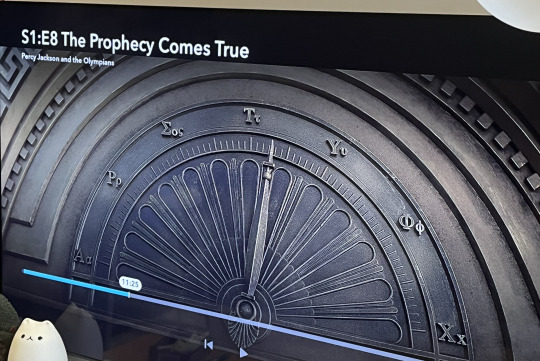

So while watching the season finale of PJO, I noticed the Greek letters used at the top of the elevator to Mt. Olympus. It starts with alpha, then skips to the end of the alphabet, but still leaves out psi and omega. Does anyone have any guesses as to why these letters were used?
#ignore the weird cropping of the first photo i took it to send to a friend and now recycling it#pjo tv#greek alphabet#pjo spoilers#percy jackson and the olympians#pjotv
7 notes
·
View notes
Text
The Evolution of the Alphabet: A Story of Human Ingenuity and Innovation 🤯
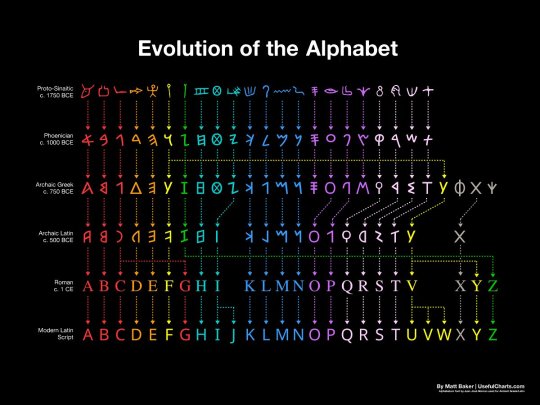
How the Alphabet Changed the World: A 3,800-Year Journey
The evolution of the alphabet over 3,800 years is a long and complex story. It begins with the ancient Egyptian hieroglyphs, which were a complex system of pictograms and ideograms that could be used to represent words, sounds, or concepts. Over time, the hieroglyphs were simplified and adapted to represent only sounds, resulting in the first true alphabets.
The first alphabets were developed in the Middle East, and the Phoenician alphabet is considered to be the direct ancestor of the Latin alphabet. The Phoenician alphabet had 22 letters, each of which represented a single consonant sound. This was a major breakthrough, as it made it much easier to write and read.
The Phoenician alphabet was adopted by the Greeks, who added vowels to the system. The Greek alphabet was then adopted by the Romans, who made some further changes to the letters. The Latin alphabet, as we know it today, is essentially the same as the Roman alphabet, with a few minor modifications.
The English alphabet is derived from the Latin alphabet, but it has undergone some further changes over the centuries. For example, the letters "J" and "U" were added to the English alphabet in the Middle Ages, and the letter "W" was added in the 16th century.
The evolution of the alphabet has had a profound impact on human history. It has made it possible to record and transmit knowledge, ideas, and stories from one generation to the next. It has also helped to facilitate communication and trade between different cultures.
The alphabets are a fascinating invention that have revolutionized the way humans communicate and record information. The history of the alphabets spans over 3,800 years, tracing its origins from the ancient Egyptian hieroglyphs to the modern English letters.

Here is a brief overview of how the alphabets have evolved over time:
Egyptian hieroglyphs (c. 3200 BC): The earliest form of writing was the pictographic system, which used symbols to represent objects or concepts. The ancient Egyptians developed a complex system of hieroglyphs, which combined pictograms, ideograms, and phonograms to write their language. Hieroglyphs were mainly used for religious and monumental purposes, and were carved on stone, wood, or metal.
Proto-Sinaitic script (c. 1750 BC): Around 2000 BCE, a group of Semitic workers in Egypt adapted some of the hieroglyphs to create a simpler and more flexible writing system that could represent the sounds of their language. This was the first consonantal alphabet, or abjad, which used symbols to write only consonants, leaving the vowels to be inferred by the reader. This alphabet is also known as the Proto-Sinaitic script, because it was discovered in the Sinai Peninsula.
Phoenician alphabet (c. 1000 BC): A consonantal alphabet with 22 letters, each of which represented a single consonant sound. The Proto-Sinaitic script spread to other regions through trade and migration, and gave rise to several variants, such as the Phoenician, Aramaic, Hebrew, and South Arabian alphabets. These alphabets were used by various Semitic peoples to write their languages, and were also adopted and modified by other cultures, such as the Greeks, Etruscans, and Romans.
Greek alphabet (c. 750 BC): The Greek alphabet was the first to introduce symbols for vowels, making it a true alphabet that could represent any sound in the language. The Greek alphabet was derived from the Phoenician alphabet around the 8th century BCE, and added new letters for vowel sounds that were not present in Phoenician. The Greek alphabet also introduced different forms of writing, such as uppercase and lowercase letters, and various styles, such as cursive and uncial.
Latin alphabet (c. 500 BC): The Latin alphabet was derived from the Etruscan alphabet, which was itself derived from the Greek alphabet.
Roman alphabet (c. 1 CE): The Roman alphabet is essentially the same as the Latin alphabet, as we know it today. The Latin alphabet was used by the Romans to write their language, Latin, and became the dominant writing system in Europe after the fall of the Roman Empire. The Latin alphabet was also adapted to write many other languages, such as Germanic, Celtic, Slavic, and Romance languages.
English alphabet (c. 500 AD): The English alphabet is derived from the Latin alphabet, but it has undergone some further changes over the centuries. For example, the letters "J" and "U" were added to the English alphabet in the Middle Ages, and the letter "W" was added in the 16th century. The English alphabet consists of 26 letters, but can represent more than 40 sounds with various combinations and diacritics. The English alphabet has also undergone many changes in spelling, pronunciation, and usage throughout its history.
The evolution of the alphabet is a remarkable example of human creativity and innovation that have enabled us to express ourselves in diverse and powerful ways. It is also a testament to our cultural diversity and interconnectedness, as it reflects the influences and interactions of different peoples and languages across time and space.
Thank you for reading! I hope you enjoyed the post about the evolution of the alphabet. If you did, please share it with your friends and family. 😊🙏
#evolution of the alphabet#history of writing#alphabet#hieroglyphs#proto-sinaitic script#phoenician alphabet#greek alphabet#roman alphabet#english alphabet#language#linguistics#consonantal alphabet#syllabic alphabet#ancient egyptian#greek mythology
12 notes
·
View notes
Text
Which Greek letters are seen on this kylix?

Image description: Early form of the Greek alphabet on an Attic black-figure bowl
This kylix is part of the collection at the National Archaeological Museum of Athens.
Letters on the top side as far as I can tell:
Alpha Α
Beta Β
Gamma Γ (yes, it looks like a lambda, but that's how they used to write it)
Delta Δ
Epsilon Ε
Digamma Ϝ (super strange to see this- but maybe it's not written in Ionic)
Zeta Ζ (yes, it looks like an iota, again it's how it used to be written)
Eta Η
Theta Θ
Iota Ι
Kappa Κ
Lambda Λ (slightly older form again)
Mu Μ
Nu Ν
Omicron Ο
Pi Π
Rho Ρ (this one threw me off so badly, because why is that an actual R)
Sigma Σ
Tau Τ
Upsilon Υ (sometimes written like a v)
Chi Χ (but like a cross)
honestly have no idea what this extra O is standing for, maybe a miswritten Phi Φ? Although it's clear on the bottom side...
Psi Ψ (chicken foot type).
They are missing Xi Ξ and Omega Ω!
#I really wonder what time period this is from#and what dialect is seen here#because the letters are an interesting mix#ancient greek#greek language#greek alphabet#kylix#pottery#classics#dys blurbs
5 notes
·
View notes
Text
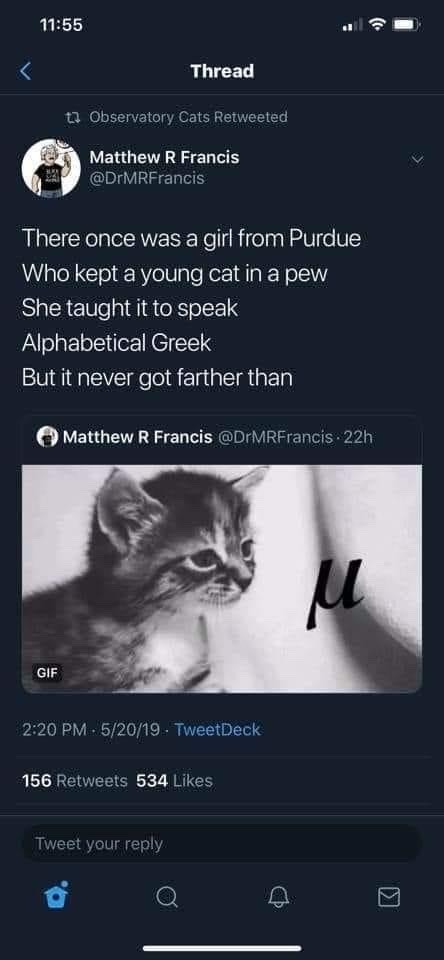
21 notes
·
View notes
Text
would it be fucked up if the inventor of greek alphabet said "wow, i sure hope that my alphabet won't be used in mpreg fanfiction" or what
5 notes
·
View notes
Text
the idea of writing a language in a different writing system than it's usually in is so interesting to me. Like,
те идеа ов вритинг а лангваш ин а дипрент вритинг системы тан ит'с юшуалиь вриттен ин ис со интерестинг то ми. Лаикь. (Russian cyrillic)
Θε ιδεα οφ βριτινγ αι λανγυαγε ιν αι διφερεντ βριτινγ συστεμ θαν θτει άυρε υοσιαλλι βριτεν ιν ις σου ιντερεστινγ το με. Λαικε. (greek)
And even in the same alphabet, but different language it is fun. Though that's more common.
Annd iven in de saime alfhabet, bøtt diffærent længuagsj itt is fønn. Dåv datt's måre kommon. (Norwegian latin)
(disclaimer that I'm not that good at either the Greek nor the cyrillic alphabet. Any suggestions as to how to improve this trans-alphabet thing are welcome!)
it's interesting when there are like just sounds kinda missing. It's probably easier there more you know the alphabet and languages using it, but like "f" in Russian is like ???, I used the kinda v-sounding one because v and f are pretty similar, but there might be a better version. And trying to get "they" and "are" in Greek was difficult as well, I probably need to learn more about diphtongs in Greek and the é and à thingies.
2 notes
·
View notes
Note
Why are Greek letters used for programming (Delta, Beta, etc)?
Does it have a more profound effect on the unconscious than other lettering?
Does it have any relation to how social scientists name the generations? (Gen X, Gen Z, Gen Alpha, Gen Beta, etc.)? Thanks.
Greek letters are used quite often to name things in math and sciences partly because of discoveries in math and sciences from Ancient Greece and partly because higher education in later centuries taught Greek as an elite language, so that its continued use would reflect the knowledge experienced in higher education. The use of Greek letters in mathematical and scientific processes provides common understanding using the letters to symbolize meaning that means the same in all languages. It is common in sciences to use Greek letters for generic lists. Programming takes place in different countries, so the Greek letters create a systematic way of programming individuals who will be controlled using an alphabet that is familiar in the sciences without regard to the language spoken by the programmer or survivor.
Programming using Greek letters sometimes corresponds with waves of vibration in the brain that need to occur for different kinds of programming to be installed. Alpha waves got their name because they were the first brain waves to be documented in 1929, subsequently discovered frequencies received progressive letter names in the Greek alphabet.
The five main brain waves are:
Delta (0-4 Hz)
Theta (4-8 Hz)
Alpha (8-12 Hz)
Beta (12-40 Hz)
Gamma (40-100 Hz)
There are also Epsilon and Lambda waves. Here is information regarding programming that takes place at different brainwave frequencies.
Additional Greek letters are also used to name types of programs used in Greek programming, which is an extensive programming involving beliefs, alters, structures and mapping based on stories in Greek mythology.
The effect of the symbols on the unconscious has to do with the programming and how the symbols were anchored in the system and the belief systems that give special meanings to some of the symbols. When the letters of Greek alphabet occur in the outside world, they will reinforce the programming in the same way other programmed symbols do.
The only correlation between how programming is named and how generations have more recently been named is the way alphabets are sometimes used in generic lists. Prior to Generation X, generations were not named using letters and instead had phrases that seemed to describe the commonality of experience of the people born into that generation. The naming of Generation X had to do with the lack of identity that those in that generation experienced in comparison to the Baby Boomers, so X was a reference to being crossed out or nothingness, rather than even a letter. Following that generation, social scientist finished up the English alphabet by labeling Generations Y (also known as MIllenials) and Gen Z, before switching over to Greek letters in naming Generation Alpha and Beta. Future generations could continue to be defined generically with letters, or maybe social scientist and pop culture will come up with other ways to describe the common experience shared by new groups of people making up their own generations.
~Josha
15 notes
·
View notes
Text

This could certainly be a coincidence, but in my endless obsession with ancient writing systems (the 900,000 that descend from Phoenician in particular 😄) I just stumbled upon this obscure, archaic form of the Greek letter Beta that, to me, bears a strong resemblance to the rune called Perþō in Old Norse and Peorð in Old English (ᛈ).
It was used in the city of Argos (which is the origin of the dynasty of which Alexander the Great was part, and is the oldest continuously inhabited city in Europe.)
Yes, Beta is /b/ and Perþō and Peorð are /p/, but the Phoenician alphabet, from which all the Greek and runic alphabets descend, didn't didn't distinguish between /b/ and /p/.
The earliest attested appearance of ᛈ is from ~400 AD. In 267 AD Argos was one of several cities sacked by "marauding bands of Goths and Heruli (both Germanic tribes)" so the possibility of a connection between ᛈ and this Beta does exist.
#ancient writing systems#ancient alphabets#runes#futhark#futhorc#greek#greek alphabet#argos#phoenician
12 notes
·
View notes
Text
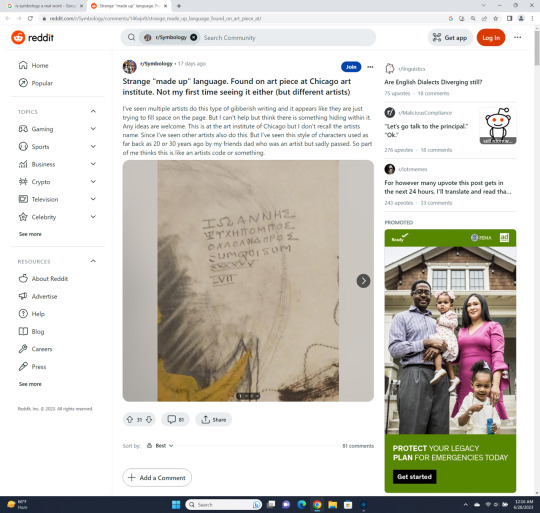
#greek alphabet#greek#latin#roman numerals#john d graham#apotheosis#content#humor#knowledge gap#they weren't trolling
3 notes
·
View notes
Text
Linguistics: Ancient Greek pronunciation
Modern Greek is a beautiful language with a rich cultural history. But to say Ancient Greek sounded the same as Modern Greek is to be dishonest, as much as saying Middle English and Contemporary English sound alike.
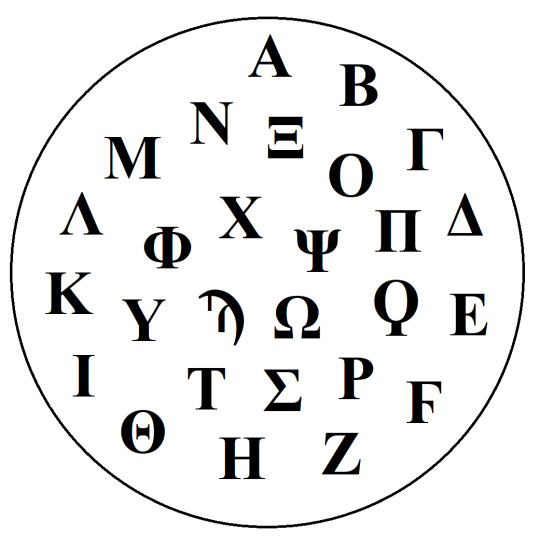
So what did Ancient Greek actually sound like? Well, we can reconstruct the pronunciation by comparing different written Greek dialects (such as Doric and Ionic), and seeing what grammarians of the time described the language as sounding like (such as the writings of Dionysius Thrax). We can also see loanwords in languages like Coptic to work our way back to an older mode of speech.
Alpha, Epsilon, Iota, Kappa, Lambda, Mu, Nu, Xi, Omicron, Pi, Rho, Tau, and Psi have all generally kept their Ancient pronunciations in Modern Greek.
The sounds that are different in Ancient Greek:
Β/β: like a "b" sound instead of Modern Greek "v." Basileus instead of Vasilevs.
Δ/δ: a hard "d" sound instead of Modern Greek soft "dh." Dolos instead of Dholos.
Γ/γ: like a "g" sound instead of Modern Greek "y"/"yh." Gunaika instead of Yineka.
Φ/φ: an aspirated "p" sound instead of an "f." Words like φῶς (phos) would have been pronounced like "p'os" instead of "fos."
Θ/θ: an aspirated "t" sound instead of a soft Modern "th" sound. Words like θάλασσα (thalassa) would have been "t'alassa" instead of "th'alassa."
Χ/χ: an aspirated "k" sound instead of Modern soft "ch." Words like χρυσός (khrusos) would have been pronounced like "k'rusos" instead of "chrisos."
Ζ/ζ: an "sd" sound that became "z" in Modern Greek. "Zeus" would have been pronounced as "Zdeus", with some dialects having "Dzeus."
Σ/σ: depending on the dialect a "z" sound instead of modern "s."
For vowels:
Αι/αι: as in German "Ein."
Αυ/αυ: as in German "Augen."
Ευ/ευ: an "ew" diphthong instead of "ev."
Ει/ει: a long "eh" sound, like in German "Ehrmann." Nelos (Νειλος) instead of Nilos (Νιλος).
Η/η: as in "ant" or "absolute." Hence the Doric spelling Σελάνα (Selana) for the usual Σελήνη (Selene), for example.
Υ/υ: as in German "über."
Οι/οι: as in "soy."
Ω/ω: a bit like the "aw" in English "raw."
There were also sounds like Digamma (Ϝ/ϝ), a "w" lost in many dialects, so words like ἄνασσα (anassa, "queen") were once ϝάνασσα (wanassa).
So the opening lines of the Iliad:
"Μῆνιν ἄειδε θεὰ Πηληϊάδεω Ἀχιλῆος
Οὐλομένην, ἣ μυρί᾽ Ἀχαιοῖς ἄλγε᾽ ἔθηκε,
Πολλὰς δ᾽ ἰφθίμους ψυχὰς Ἄϊδι προΐαψεν
Ἡρώων, αὐτοὺς δὲ ἑλώρια τεῦχε κύνεσσιν
Οἰωνοῖσί τε πᾶσι, Διὸς δ᾽ ἐτελείετο βουλή,
Ἐξ οὗ δὴ τὰ πρῶτα διαστήτην ἐρίσαντε
Ἀτρεΐδης τε ἄναξ ἀνδρῶν καὶ δῖος Ἀχιλλεύς."
Would be something like this in Ancient Greek (using a simplified transliteration):
"Mǣ-nin a-wē-de te-a Pæ-læ-i-a-deo A-ki-lǣ-os
Ū-lo-me-næn, hæ mu-ri A-kai-ois al-ge' e-tæ-ke,
Pol-las dip-tī-mūs psu-kas A-wi-di pro-i-ap-sen
Hæ-rō-ōn, au-tūs de he-lō-ri-a tew-ke ku-nes-sin
Oi-ō-noi-si te pā-si, Di-wos de-te-lē-e-to bū-læ,
Ex hū dæ ta prō-ta di-as-tǣ-tæn e-ri-san-te
A-tre-i-dæs te wa-nax an-drōn kai dī-wos Akill-ews."
9 notes
·
View notes
Text
Limyran Oracle
So I’m thinking about making an oracle deck using the Limyran Oracle (Greek alphabet oracle) as the cards. Cards can be easier to use for those with disabilities and mobility issues and I’ve always wanted to design a set of cards for divination. My problem is I’m not sure anyone would want them.
So this is just to see what your thoughts on. If plenty of people seem interested I’ll put out a form to see what people think of each meaning, what images to come to mind for them. I don’t want to just use myself as I’m a bit new to the Limyran Oracle and their meanings.
So, what do you think?
#hades and persephone#hades devotee#hades devotion#persephone deity#persephone devotee#persephone devotion#hellenic devotion#hellenic pagan#hellenic polytheism#hellenic religion#hellenic witch#hellenic worship#Limyran Oracle#greek alphabet#Greek alphabet oracle#oracle#oracle deck#oracle cards#real witches#witchblr#witchcraft#divination
4 notes
·
View notes
Text

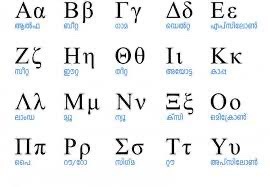



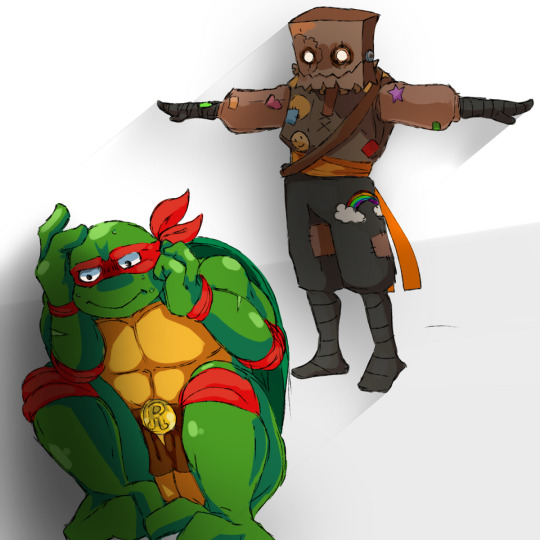




Part 94
4 notes
·
View notes
